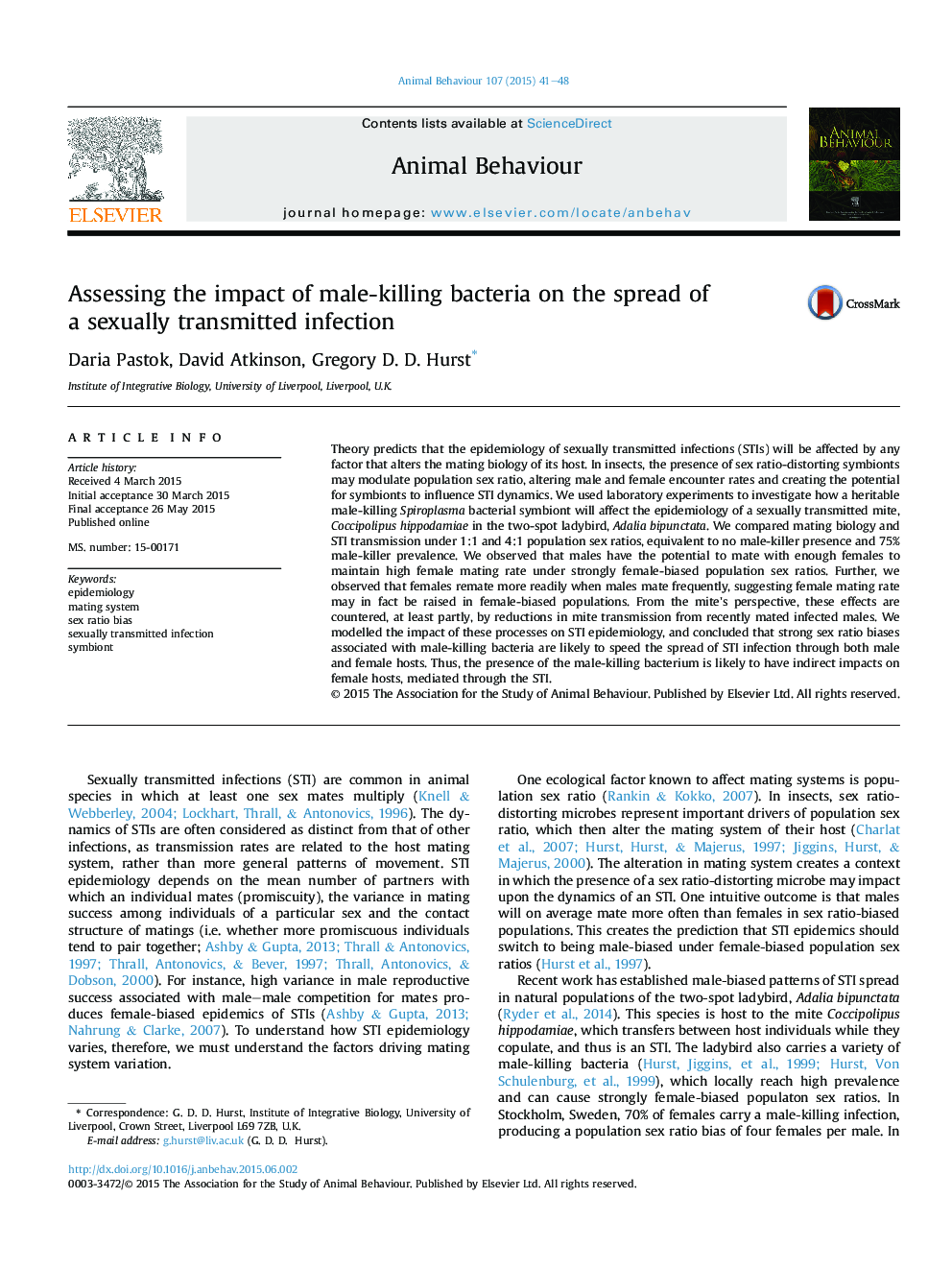| کد مقاله | کد نشریه | سال انتشار | مقاله انگلیسی | نسخه تمام متن |
|---|---|---|---|---|
| 8489698 | 1552221 | 2015 | 8 صفحه PDF | دانلود رایگان |
عنوان انگلیسی مقاله ISI
Assessing the impact of male-killing bacteria on the spread of a sexually transmitted infection
دانلود مقاله + سفارش ترجمه
دانلود مقاله ISI انگلیسی
رایگان برای ایرانیان
کلمات کلیدی
موضوعات مرتبط
علوم زیستی و بیوفناوری
علوم کشاورزی و بیولوژیک
علوم دامی و جانورشناسی
پیش نمایش صفحه اول مقاله

چکیده انگلیسی
Theory predicts that the epidemiology of sexually transmitted infections (STIs) will be affected by any factor that alters the mating biology of its host. In insects, the presence of sex ratio-distorting symbionts may modulate population sex ratio, altering male and female encounter rates and creating the potential for symbionts to influence STI dynamics. We used laboratory experiments to investigate how a heritable male-killing Spiroplasma bacterial symbiont will affect the epidemiology of a sexually transmitted mite, Coccipolipus hippodamiae in the two-spot ladybird, Adalia bipunctata. We compared mating biology and STI transmission under 1:1 and 4:1 population sex ratios, equivalent to no male-killer presence and 75% male-killer prevalence. We observed that males have the potential to mate with enough females to maintain high female mating rate under strongly female-biased population sex ratios. Further, we observed that females remate more readily when males mate frequently, suggesting female mating rate may in fact be raised in female-biased populations. From the mite's perspective, these effects are countered, at least partly, by reductions in mite transmission from recently mated infected males. We modelled the impact of these processes on STI epidemiology, and concluded that strong sex ratio biases associated with male-killing bacteria are likely to speed the spread of STI infection through both male and female hosts. Thus, the presence of the male-killing bacterium is likely to have indirect impacts on female hosts, mediated through the STI.
ناشر
Database: Elsevier - ScienceDirect (ساینس دایرکت)
Journal: Animal Behaviour - Volume 107, September 2015, Pages 41-48
Journal: Animal Behaviour - Volume 107, September 2015, Pages 41-48
نویسندگان
Daria Pastok, David Atkinson, Gregory D.D. Hurst,